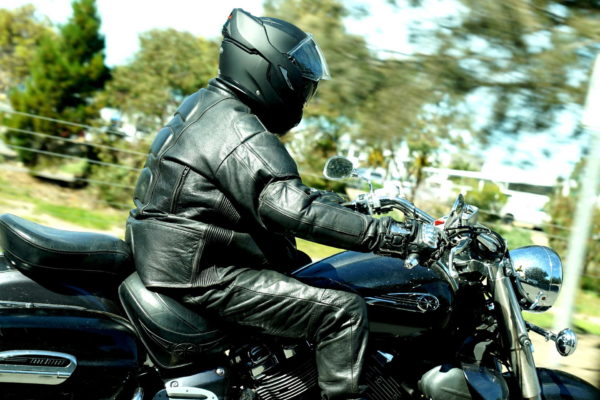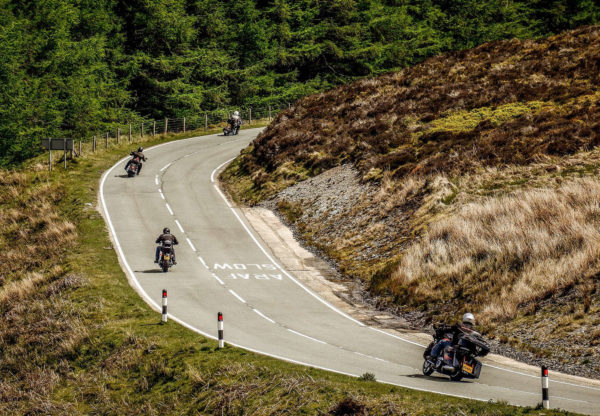Decided to make the move from a four-wheeled cage to a two-wheeled chariot? Good call. You won’t regret it!
Unfortunately though, making that decision is just the first part of what can be an intimidating process for many. You need to figure out things like what model motorbike you want to ride, where you want to learn and how many lessons you might need. It’s a lot of planning, right before you even climb aboard – which is why some riders fail at the first hurdle.
So in this article, we’ll guide you through a few simple ways to best prepare you for your very first motorbike lesson… and beyond. Buckle up!
1: Get the gear
According to Jordan on RoadRacerz, dressing the part goes a long way. And it’s not a vanity thing (although you will look damn good in those leathers!) – it’s about safety first. Safety, visibility, protection and durability, then sex appeal.
Think heavy denim jeans (or leather, if you’re feeling wild), a thick jacket, sturdy boots and motorbike gloves. Leave your shorts and flip-flops at home. There’s no place for them on a motorcycle.

A helmet, of course, is a no-brainer – although many training schools will provide you with one, plus a high-vis vest. So well before you turn up as the new kid in training school, make sure you’ve got your “uniform” right.
Many riding schools will have a bike you can use for the basic handling skills test and maybe even the first few lessons. You’ll want to get your own bike, though, and it will need to be a bike which is approved for learner use.
2: Check those eyes
We’re not about to stop glasses or contact lens wearers from riding a motorbike. That would be downright mean. But still, even if you don’t have perfect 20-20 vision, you’ll be expected to see hazards ahead and to decipher road signs as you cruise along your merry way.
The eyesight test is different in each country but generally you’ll need to be able to read a licence plate from around 20 metres away. You don’t want to fail that, nor do you want to “fail” at any real-life eyesight tests during your biking adventures. In many countries, you have to pass an eyesight test before you can get your licence, but if you’re going to be driving a moped on a car licence (which is perfectly legal in many countries) and you haven’t had an eyesight test in a while, it’s best to go and get one.
3: Nerd up in advance
Depending on the country you’re learning to ride in, you might need to do a motorbike theory test and/or a basic handling skills test so that you can get your motorbike learner licence.
It’s absolutely essential that you get the theory and rules of the road down first. There are plenty of YouTube tutorials and other guides out there for you to do a bit of eLearning, which can help you understand what’s in store before your first day at training. Search for IAM commentary drives if you want to see how the experts do it.
4: Get to know the roads
During your training, it’s likely that you’ll feel a bit overwhelmed. You’re learning all this new information, how to operate a fairly intense piece of machinery and you had 3 coffees to help you perk up for the theory part. Nerves can get the better of you.
So it’s a good idea to give yourself a break whenever you can. Say, for instance, by getting to know some of the routes in your area in advance. Ask a qualified driver to take you around on the back of their motorbike, so you can get to grips with the roads used by your training school. You might not know many of the terms or mechanics thrown at you on Day 1 – but at least you’ll be familiar with the roads.

That’s it! You’re ready to fly
In this piece, we’ve shared just a few quick tips to help you get ready for your first batch of motorbike lessons.
To recap: get the right equipment, take the necessary pre-tests and mentally prepare for what’s coming up, by studying the theory and the practicalities involved in your training.
The little pointers above are fairly obvious, really – but they’re ones that newbie riders commonly forget, which can lead to undue stress and panic. And these two companions are definitely ones you don’t want with you on the road! Calm and focus, yes. Stress and panic, no.
So take plenty of time before your training begins to prepare yourself. Follow the steps we’ve set out and show up for your first training day with a pretty solid foundation of knowledge. A foundation on which you can easily build the rest of your course.
Bonus tip before we go: Remember, motorbike lessons can be tough. But they’re so, so worth it. So don’t forget to enjoy the experience, right through from your training and onto the open road!

